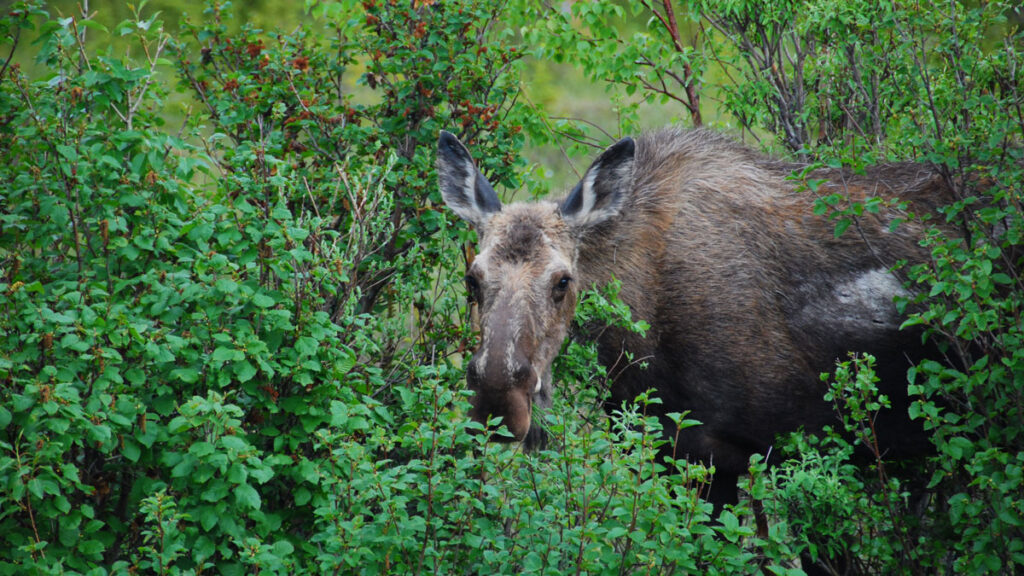Boreal forests—together comprising the largest land biome on Earth—account for about 23% of our planet’s forested area and generally experience less pressure from human activities than other regions. A recent analysis of satellite images, however, showed that anthropogenic climate change has reached the biome—and it’s a scene worthy of Tolkien: The entire boreal forest is on the move.
“It clearly shows that one of the world’s largest biomes is in the midst of a massive transition.”
Global change ecologist Logan Berner and remote sensing expert Scott Goetz, both from Northern Arizona University, used Landsat satellite images from 1985 to 2019 to examine changes in land cover. Along the southern edge of boreal forests, the team observed an increase in browning, indicating that trees were dying. Greening along the northern edge, on the other hand, crept upward over the decades.
“It clearly shows that one of the world’s largest biomes is in the midst of a massive transition,” said Terry Chapin, an ecologist from the University of Alaska Fairbanks who was not involved in the study. “This puts another nail in the coffin in terms of showing what climate change is doing to our planet.”
What’s Causing the Shift?
The boreal forest biome encompasses more than 15 million square kilometers (about 5.8 million square miles) and features deciduous trees and conifers that can survive cold temperatures all year. Prior to Berner and Goetz’s work, these forests had been projected to move northward because of climate change, but whether the biome was already shifting remained uncertain.
Previous studies have examined the move in localized areas using coarse-resolution satellite data, but Berner and Goetz’s study is the first to reveal the global picture using Landsat’s high-resolution images. To isolate the effects of climate change, the researchers excluded forest areas that were greening because they were recovering from disturbances like wildfires and logging. Compared with previous work, Chapin said, “it’s a much cleaner study in terms of its ability to make conclusions about the effects of climate.”
The researchers suggested the shift is caused by direct and indirect factors. In northern latitudes, warmer temperatures lead to longer growing seasons, which speed up forest development. Meanwhile, temperatures along the southern edge are becoming too hot to sustain forest growth, leading to browning.
In addition, comparing greening and browning rates with a database of soil nitrogen levels uncovered a previously overlooked indirect effect—areas experiencing greening tended to have high soil nitrogen levels. According to Berner, warming along northern latitudes likely stimulates microbes to break down organic matter and release nitrogen, which then promotes tree growth.
Far-Reaching Effects
“With continued climate change, we’re likely to see actually a contraction of the boreal forest overall, because the rate at which trees die is much faster than the rate at which they’re able to expand.”
Comparing the rate of greening across the entire study period (1985–2019) with the rate of greening over the past 2 decades revealed that the shift is slowing—a trend Berner thinks will continue. “With continued climate change, we’re likely to see actually a contraction of the boreal forest overall, because the rate at which trees die is much faster than the rate at which they’re able to expand,” he said. According to Goetz, including data on the forest shift in models “will be our best way for projecting what’s likely to happen over the next 2–3 decades.”
The shift will have far-reaching consequences, some of which could further exacerbate climate change, according to the authors. Tree mortality along the southern border will increase carbon dioxide in the atmosphere if the forests aren’t replaced with plants that are equally good at fixing carbon. Increasing tree cover in the north will cause this region to absorb more sunlight, further warming the region. Vegetation also traps snow that insulates permafrost, potentially causing it to melt and lead to the release of methane and carbon dioxide.

The effects of the forest shift will also cascade through wildlife populations. For example, increased greening along northern latitudes can lead shrubs to outcompete lichens that caribou depend on during the winters. Lichens are a source of food already threatened by forest fires. Caribou are known to shape forests by trampling vegetation and redistributing nutrients as they migrate. As caribou numbers decline, so will their ability to mold forests. Beaver populations, on the other hand, have increased in recent years. An increase in woody plants along the northern margin of the boreal forest will encourage beavers to move northward, damming and remodeling rivers as they go.
However, Berner and Goetz cautioned that the remote sensing data do not give a comprehensive picture of all ecosystem change. A more thorough understanding will require on-the-ground monitoring, advanced models, and more remote sensing. Ecological monitoring will be especially important, the authors said, as forecasts show extreme events, including heat waves, droughts, and forest fires, are likely to increase in frequency. These devastating events could have a monumental impact on the boreal forest biome in the next few decades.
—Saima Sidik (@saimamaysidik), Science Writer

